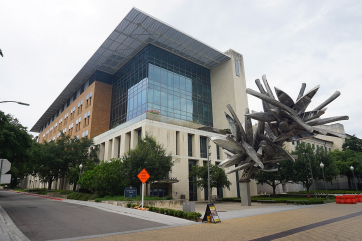La Brea Tar Pits' 100 Years of Fossil Discoveries Celebrated at Los Angeles Museum
By Russell WesterholmThe most prolific digging site for Ice Age remnants, the La Brea tar pits in Los Angeles are still producing discoveries for scientists 100 years after the initial discovery, the Associated Press reported.
Monday marks the 100th anniversary of digging at the tar pits. The plethora of finds includes 5.5 million bones from more than 600 species of animals and plants. While the bones of mammoths, dire wolves and saber tooth cats are main attractions, microfossils discovered in recent years are more helpful to scientists in picturing the times' landscape.
"Earlier excavations really missed a great part of the story," said John Harris, chief curator at the George C. Page Museum, which oversees the fossil collection. "[People] were only taking out bones they could see, but it's the hidden bones that provide clues to the environment."
Experts also predict that digging at La Brea will not be complete for another 100 years. The wealth of Ice Age remnants is seemingly endless, especially with microfossils, finds that have become more valuable in recent years.
"For decades we collected and presented statue-like examples of the mega-fauna of the past," Harris told the Los Angeles Times. "Now, we're attempting to preserve a whole prehistoric ecosystem and chronicle how it changed over time."
Microfossils range from beetle wings, ant legs, chips of teeth, twigs, leaves and more, but they have been instrumental in learning about the end of the Pleistocene Epoch, some 10,000 to 50,000 years ago. Understanding the ecology and climate of that time will also help scientists better understand current climate change.
"These tiny bits and pieces may not look exciting, but they have become the coolest things on this planet," Luis Chiappe, vice president of research and collections at the Natural History Museum, said. "The menageries of insects, lizards and snakes emerging from our excavations are telling stories you can't get from a mammoth skeleton alone."
The century of discoveries will be celebrated with lectures, discussion and more with Page Museum hosting lectures, discussions and more. The gathering of paleontologists and other scientists will focus on technological advances as well, like more accurate dating methods and fossil analysis.
"The exhibits on display at the Page Museum haven't changed much since we opened in 1977," Harris said. "But over the next five years, we're going to change all that. We'll have the 'wow' of gigantic skeletons, as well the little things that lived beneath them."








